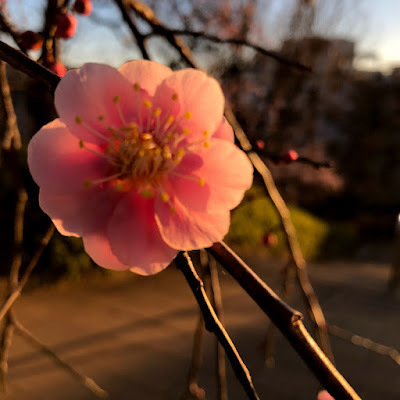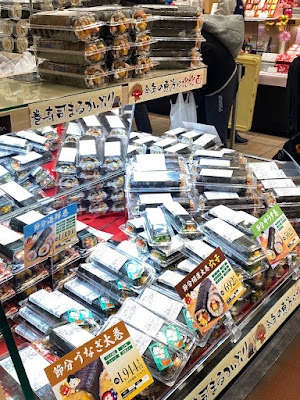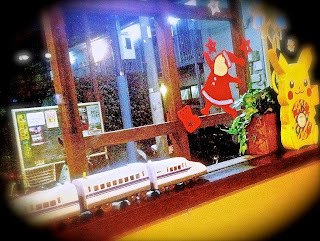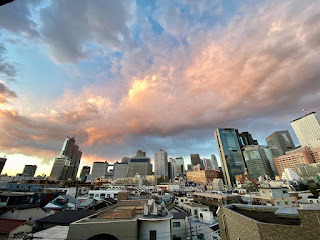Roland Kelts's Blog, page 9
May 18, 2022
My IDEAS column on Japan's deficient digital domains
[I broke my shoulder a couple of months ago and that slowed output considerably. Am on the mend now.]
Japan once led global tech innovation. How did it fall so behind?

When I first moved to Japan in the late 1990s, Japan’s technological achievements were envied. In 2001, at a book launch in New York, I recorded a video of fellow revelers on my Japanese cell phone. The model had just been released: a squared-off clamshell of sparkly maroon plastic, with an impressive color screen and emoji-like graphics. I emailed the video instantly to publishing friends in Tokyo, which was then home to the world’s second-fastest internet speeds. They responded just a few minutes later, flashing victory signs. My friends in New York cooed as if we’d just watched a new moon landing.
But almost exactly twenty years later, vast regions of Japan’s digital universe are stuck in the early aughts. Online banking, airline booking, major newspapers, you name it: Services that have been streamlined by the digital revolution in much of the world are, in Japan, still plagued by convoluted drop-down menus that lead to dead ends, and detailed forms that need to be printed, filled out by pen, returned by fax. In a country that justifiably prides itself on excellent customer service, something happens when it comes to relaying information through a user interface displayed on a flat screen.
Japan’s high-quality, mostly physical public infrastructure has actually long disguised its sclerotic digital systems. The juxtaposition is jarring between the country’s clunky digital interfaces and its unrivaled engineering prowess — trains that depart on the minute, escalators and elevators that rarely break down, and heated toilets that will hide your sounds, clean your nether parts and sometimes talk, even sing to you. Why the disconnect?
Forty years ago, Asia scholar Chalmers Johnson coined the term “developmental state” to describe the Japanese government’s hands-on role in its post-war economic growth spurt. A so-called “iron triangle” linked the Liberal Democratic Party – which remains in power today – with big business and the bureaucracy, creating well-engineered public infrastructure and jobs to roaring economic success. In Western media, this was sometimes labeled “Japan Inc.,” a pejorative phrase implying a public-private partnership rooted more in government-led collusion and coercion than competition. But it also gave birth to systems like the Tokyo metro and its accompanying FeliCa-pass technology, produced by technology giant Sony and embedded throughout the transport network.
State-backed innovation was so effective because it reduced uncertainty. But when a new breed of software entrepreneurs began to lead innovation elsewhere in the world, Japan’s own private sector found it hard to follow. The iron triangle had ossified, locked in something resembling an immovable jiu-jitsu hold. If one player moved an elbow an inch one way, they were all at risk of a stumble; if a corporate actor tried something new and moved their elbow, the politician’s might get broken. On balance, it was better to stay in one place: Even if the match was boring and nobody was making progress, at least you were holding a position.
By any metric today, Japan’s digital performance is dismal. Among the Organization for Economic Cooperation and Development countries, Japan is now ranked 27th in digital competitiveness and 22nd in digital talent by the International Institute for Management Development — embarrassingly low for the world’s third-largest economy. A recent McKinsey & Company study revealed that two decades after the government launched its first digital initiative, “e-government,” only 7.5% of its procedures can be completed online. IT and software engineering degrees are less prestigious than those in economics or management, and batches of developer talent are hired from overseas.
In 2022, these numbers have serious ramifications. Japan’s initial vaccine rollout last spring was slowed partially by inefficient analog systems, poor communication between governments and clinics, and a paper mail-based coupon campaign. When Covid-19 hit two years ago, most Japanese corporations had no contingency plans for remote work, and few had experience with platforms like Zoom.
Yes, you should work from home, some said, but you need to show up at the office to stamp your personal seal (hanko) to prove that you worked. It was Covid-19-meets-Kafka: some employees commuted by train, risking infection just to stamp their seals and go back home. Last summer’s Tokyo Games saw international athletes and media griping on Twitter about the reams of Japanese-language print documents they were required to sign and array of apps to download — many of which were buggy and dysfunctional. (A year on, there’s progress: a recently introduced fast-track entry app has many pleasantly surprised.)
In what looked like a panic-stricken move, the Japanese government launched its first “Digital Agency” in September 2021, shortly after the Tokyo Games ended and just before a national election. But few announcements have followed, and the agency’s current English website looks more like a hastily-penned government memo nailed to the internet. Lack of cohesion at various levels has fed into a lack of momentum, too. As of December 2021, the world’s third-largest economy has produced six tech unicorns — despite the existence of various incubator programs, including the ambitious government-backed J-Startup. Last year’s total venture capital funding, at around $9 billion by one count, remained a fraction of the amount invested in the U.S.
One barrier to change, at least for me, is that the irritation passes. A startup founder might be rightly frustrated by the still-nascent ecosystem. But as an ordinary consumer, there are workarounds; using Amazon over the visually-challenging Rakuten, or embracing the habit of paying bills at the convenience store over automated direct debits. And even when you travel to a shinkansen station with your digital PASMO — a prepaid transportation card — and it prevents you from using the ticket machine, forcing you to line up at the manned booths, you still glide down the escalator, where a bullet train speeds you to your destination, on time to the minute.
When the product at the end functions infallibly, the old ways of communicating and consuming are kind of quaint: comforting signs that one of the world’s most aging nations, home to most of the world’s oldest companies, is behaving in character.
March 3, 2022
Latest "Letter from Tokyo" for The Japan Society of Boston: Throw Those Beans!
Letters from Tokyo, February 2022: Throw Those Beans!

T.S. Eliot famously called April the cruelest month, but for me and many I know, the cruelest month is the shortest, February, especially if you live in chillier parts of the northern hemisphere. In Tokyo, New Year’s greetings and shinnenkai drinking parties start to go stale while the dark, cold, snow-dusty winter keeps hanging around like a guest who won't leave.
Fortunately, February in Tokyo has some strategically placed distractions to help us forget that it’s February.
On the third, we had our Setsubun rituals, heralding the arrival of spring and giving winter the memo to move on. We tossed roasted soybeans out our front door to cast away demons and welcome good fortune, shouting Oni wa soto! and Fuku wa uchi! Then we tossed some beans around the house, where they crackled softly underfoot until they were vacuumed.

You're supposed to eat one soybean for each year of your life, but that's become several beans too many for me so I only had a couple. We also ate eho-maki, the thick, stuffed and uncut good-luck sushi rolls while facing north-northwest, this year’s lucky direction—though I can no longer eat one of those in a single sitting either. Too much good luck for me to handle, I guess.
The next day saw the start of the Winter Olympics just a stone’s throw away in Beijing. Okay, to throw a stone that far you'd have to have the arm of a Shohei Ohtani or maybe Goku, but with Beijing only an hour behind Tokyo, it was easy for us to watch the Games in real time.
Internationally, a lot of social media spleen was vented at athletes for their perceived failures or faux pas or drug tests. But here in Tokyo, the chatter on and offline was about a social media apology, posted to Instagram by Japanese ski jumper Sara Takanashi, whose barely oversized snowsuit got her team disqualified and cost Japan a chance to medal.
Takanashi’s remorse was greeted by an outpouring of support in Tokyo coupled with some serious reflections on Japan’s culture of apology. Saying sorry is often the first response to any situation in Japan, but some wondered if it is always appropriate, or even sincere.

We were hit by rising Covid numbers until a little before Valentine’s Day, another of February’s handy distractions.
The holiday was embraced here during the 1950s, when clever marketers added a counterpart: White Day, March 14th. On the former, women give men chocolate; on the latter, men return the favor. Double the sales!
But sincerity dogged this day, too. The ritual of giri choco, obligatory chocolates female employees are expected to gift their male colleagues, has recently been in steep decline. Covid’s office closings may have killed it.
February also brings us umemi, plum-blossom viewing, a sign of spring more reliable than tossed soybeans, huge sushi rolls and good-luck chants. April’s hanami cherry-blossom frolics get the spotlight, but plum blossoms are bolder and more voluptuous, and the annual festival at Umegaoka's plum blossom hill in Setagaya is the surest sign that spring is shoving winter out the door.

Sadly, the end of this February has brought us an invasion and war in Eastern Europe, a horrific distraction nobody wants. Hurry up, March! Please march it all away.


February 23, 2022
*Book Launch, March 4: MONKEY--New Writing from Japan Vol. 2: TRAVEL
I'm thrilled to announce the imminent launch of "MONKEY: New Writing from Japan Vol. 2: TRAVEL" on Friday, March 4th, 7-8:30pm EST. The latest issue of the world's only annual English-language Japanese literary magazine features new writing by Mieko Kawakami, Haruki Murakami, Aoko Matsuda, Hiromi Ito, Kyohei Sakaguchi, Hiromi Kawakami, a new translation of Yasunari Kawabata, a Noh play, manga by Satoshi Kitamura and a delectable selection of poetry and short essays by Japan's top artists and writers.

Award-winning author Aoko Matsuda, translator/author Polly Barton, author Adam Ehrlich Sachs, MONKEY co-founder Motoyuki Shibata and managing editor Meg Taylor will present new work from the magazine and discuss the art of translation. Please join us by registering for free HERE!
*Graciously hosted by Pittsburgh's White Whale Bookstore, where you can purchase your copy of MONKEY Volumes 1 & 2 and works by the participating authors with one click.
February 17, 2022
Video: Japanese Pop Culture -- Connecting the World through Manga and Anime
Here's the video of our live streamed event for Japan Society New York. My thanks to fellow panelist Julia Mechler and moderator Bill Tsutsui, and to sponsors the Government of Japan, Portland Japanese Garden, Mitsubishi UFJ Financial Group and Orix Corporation USA. And big thanks to the great and vivacious audience who tuned in live and chatted up a storm of insights and questions.
February 10, 2022
Live Stream Journey Into the Sprawling Japanese Pop Culture Scene, Tuesday Feb. 15, Japan Society of New York
View this email in your browserLIVING TRADITIONS WEBINAR SERIES
Japanese Pop Culture: Connecting the World through Manga and Anime
Tuesday, February 15, 7-8 pm ET (4-5 pm PT)
Japanese pop culture, symbolized by manga and anime, has become an increasingly significant part of the cultural conversation across the globe. The fifth and final event in our Living Traditions webinar series invites you on a journey into the sprawling Japanese pop culture scene, from the history of manga and anime to recent trends and the global influence of otaku culture today. This is a free event, with advance registration required. Register Today
Meet the Speakers:SpeakersJulia Mechler, manga creator and Content Production Group Manager at mixi, inc.
Roland Kelts, author of Japanamerica: How Japanese Pop Culture Has Invaded the U.S.
Moderator
Bill Tsutsui, President and CEO of Ottawa University; author of Japanese Popular Culture and GlobalizationRevisiting Manga and Animation at Japan Society
Get up to speed with videos featuring fascinating conversations about Japanese anime, manga and more:
The State of Japanese Animation in a Post-Miyazaki World: Directors to Watch
(4:26)Mind of the Mangaka: Yusei Matsui, Creator of Assassination Classroom
(45:39)Manga in America: How English Editions are Born
(1:15:35)Anibiz: Anime Business Conference
(1:24:19)Photos: © SeanPavonePhoto / iStock. Speaker headshots: (left to right) Julia Mechler; Roland Kelts © Lisa Kato; William Tsutsui. © Oleksandr Todorov / iStock.
Living Traditions webinar series is co-presented with Portland Japanese Garden and supported by the Government of Japan.

Talks+ Programs at Japan Society are generously sponsored by MUFG (Mitsubishi UFJ Financial Group) and ORIX Corporation USA. Additional support is provided by an anonymous donor, the Sandy Heck Lecture Fund, and Helen and Kenneth A. Cowin.
Japan Society
333 East 47th StreetNew York, NY 10017
Join | Support | Calendar | Location & Hours
Privacy Policy | Unsubscribe
February 2, 2022
First "Letter from Tokyo" in 2022 for The Japan Society of Boston: Ode to Osechi
My first "Letter from Tokyo" of 2022 is an ode to osechi ryori, the traditional Japanese New Year's foods that I love and long for every January.
Last spring, I was commissioned by The Japan Society of Boston to write a series of short monthly musings called "Letters from Tokyo." These have enabled me to dip briefly into impressions and memories of my life in Japan without belaboring them or boring the daylights out of anyone who might bother reading about them. Wishing you a Happy Lunar New Year and a Healthy Year of the Tiger!

Letters from Tokyo, January 2022: The Colors of Osechi
Earlier this month it snowed in Tokyo the way it does in Tokyo—just enough to cover trees and buildings with a white fringe and make the sidewalks slippery and the parks sparkle in the sun.Because it will melt away in a day or so, snow in Tokyo is an event, spawning a million pictures and videos on social media. It’s like a mini-sakura/cherry blossom season in the middle of winter, a cold-weather blast of beauty and impermanence. Gasps of awe are not uncommon.
The Tokyo metropolis is home to over 30 million residents and zero snowplows. As the snow falls, Tokyoites brandish umbrellas en masse, many wearing loafers and sneakers. After it stops, shopkeepers deploy shovels and brooms. (I've yet to see a powered snowblower on my block, though I'm sure there are some around.)

I look forward to January in Tokyo the way I once looked forward to Christmas in the US. All the colors come out. But instead of gift-wrapping and ribbons and strings of flashing light bulbs, the colors are in the food. And oh, what food.
It puzzles me when some Japanese friends shake their heads and tell me they're sick of or just don't like osechi ryori, the array of traditional New Year’s morsels, each one symbolizing something or other, packed together and presented in vivid lacquerware bento boxes stacked high enough for royalty.
True, they're meant to last for up to three days, which means a lot of leftovers. But they're varied and, I think, delicious.
Everything about osechi is meant to auger health and good fortune in the coming year. The culinary ritual dates back to 8th century imperial court banquets, but today you can buy your own osechi feast at your local convenience or department store, or order online for home delivery.
Every January, the shelves of sprawling depachika basement food halls blossom into fantasylands of color and abundance. Even the aisles of your otherwise pedestrian corner grocery turn a rich and shiny crimson.

I spent my first January New Year’s in Japan in a cramped danchi public housing block in Osaka. I didn't make any plans, aside from splurging on a bottle of American whiskey, and decided to watch the countdown to midnight on my tiny TV.
I was severely disappointed. There was the Kohaku Uta Gassen, Japan’s annual “red and white” singing competition, which I found gaudy and whose performers I barely recognized. One channel broadcast the solemn 108 Buddhist bell rings at Zojo-ji Temple in Tokyo, meant to cast out worldly desires and begin afresh. Other channels had news updates.
Cheers!
The next January I stayed at a friend’s empty apartment in Tokyo. On New Year’s Eve, I was invited by a neighboring couple I didn't know very well to a concert/party in Odaiba, the artificial island in Tokyo bay. Instead I stayed closer to home and lined up shoulder-to-shoulder with 4 million others, inching along the gravel path to Meiji Shrine to offer prayers and coins to the gods.

It wasn’t until the following year, when my Japanese family invited me to a relative’s home in Yokohama, that I began to appreciate and eventually love January in Japan. I played games and sang songs with the kids, fitted a jigsaw puzzle with a cousin, and helped carry firewood from an outdoor storage shed. We ate all day and into the night—not just osechi, but a massive pot of nabe stew, heaps of rice and soba and plates of fresh crab.
Everything looked gorgeous and tasted great. And I’d never before seen my uncle, aunt and cousins acting so bemused and relaxed.
January in Tokyo is chilly, verging on frigid at night. The days are still short here. Sometimes there's a little snow. But now I can't imagine a better place to welcome another year. Give me osechi, vibrant color and a week of good sleep. I don't miss midnight champagne countdowns at all.


January 19, 2022
Janamerica Live Streaming Event, Feb. 15, for The Japan Society of New York
February 15, 2022 7:00 pm
Live Webinar: Free Registration HERE
Part of the "Living Traditions" series
Tuesday, February 15, 2022 at 7-8 pm EST (4-5 pm PST)

Japanese pop culture, symbolized by manga and anime, has become an increasingly significant part of the cultural conversation across the globe. Julia Mechler, manga creator and Content Production Group Manager at mixi, inc., and Roland Kelts, author of Japanamerica: How Japanese Pop Culture Has Invaded the U.S., provide their insights into the current state of the industry, from pen to paper to screen, unpacking some of the latest trends and emerging technologies in Japanese pop culture. This webinar covers the historical development of manga and anime, the global influence of otaku culture, and what the future may bring inside and outside of Japan. Moderated by Bill Tsutsui, author of Japanese Popular Culture and Globalization, the fifth and final event in our five-part "Living Traditions" webinar series invites you on a journey into the sprawling Japanese pop culture grounded in a unique cultural DNA.
Speakers
Julia Mechler, manga creator and Content Production Group Manager at mixi, inc.
Roland Kelts, author of Japanamerica: How Japanese Pop Culture Has Invaded the U.S.
Moderator
Bill Tsutsui, President and CEO of Ottawa University; author of Japanese Popular Culture and Globalization
Agenda
7-8 pm EST (4-5 pm PST) Discussion and Q&A
Program Details
This is a free event, with advance registration required. The program will be live-streamed through YouTube, and registrants will receive the viewing link by email on the day before the event. Participants can submit questions through YouTube during the live stream.
Live Streaming Event, Feb. 15, for The Japan Society of New York
February 15, 2022 7:00 pm
Live Webinar: Free Registration HERE
Part of the "Living Traditions" series
Tuesday, February 15, 2022 at 7-8 pm EST (4-5 pm PST)

Japanese pop culture, symbolized by manga and anime, has become an increasingly significant part of the cultural conversation across the globe. Julia Mechler, manga creator and Content Production Group Manager at mixi, inc., and Roland Kelts, author of Japanamerica: How Japanese Pop Culture Has Invaded the U.S., provide their insights into the current state of the industry, from pen to paper to screen, unpacking some of the latest trends and emerging technologies in Japanese pop culture. This webinar covers the historical development of manga and anime, the global influence of otaku culture, and what the future may bring inside and outside of Japan. Moderated by Bill Tsutsui, author of Japanese Popular Culture and Globalization, the fifth and final event in our five-part "Living Traditions" webinar series invites you on a journey into the sprawling Japanese pop culture grounded in a unique cultural DNA.
Speakers
Julia Mechler, manga creator and Content Production Group Manager at mixi, inc.
Roland Kelts, author of Japanamerica: How Japanese Pop Culture Has Invaded the U.S.
Moderator
Bill Tsutsui, President and CEO of Ottawa University; author of Japanese Popular Culture and Globalization
Agenda
7-8 pm EST (4-5 pm PST) Discussion and Q&A
Program Details
This is a free event, with advance registration required. The program will be live-streamed through YouTube, and registrants will receive the viewing link by email on the day before the event. Participants can submit questions through YouTube during the live stream.
January 13, 2022
December 31, 2021
My sixth "Letter from Tokyo" for The Japan Society of Boston
I just wrote my last 2021 "Letter from Tokyo" for The Japan Society of Boston about the differences between Japan's Bonenkai "forget-the-year" year-end parties and Christmas parties in Western countries, and the placid Japanese New Year's week (Oshogatsu) versus the Western NYE one-night blowout. Openly cribbed Joan Didion, with respect, and not a little reverence.

LETTER FROM TOKYO, DECEMBER 2021: BONENKAI BLUES
“It is easier to see the beginnings of things, and harder to see the ends.”
That’s the first line of “Goodbye to All That,” one of the most widely read personal essays by American author Joan Didion, who died this month, two days before Christmas. The sentence is deceptively simple and seductive, like a Zen koan, but it takes on added weight when you actually come to the ends of things—like another year.
In Tokyo, the year usually starts ending in November, with elaborate light displays cropping up in the city’s shopping and strolling centers, pre-recorded Christmas songs piped into every department, grocery and convenience store, and a winter flurry of appointments, meetings, deadlines and … drinking parties.
Yes, drinking parties.
These parties are not the same as the annual company Christmas parties in Western cities, with their obligatory secret Santa gift-giving rituals and gaudy polychromatic sweaters and well-wishes for the holiday to come, which will ostensibly be a Christmas Eve and Day spent with family in relative calm beside a silent fir tree.
The Christmas party looks forward to the coming holiday itself, and if you are wise, prudent and over 25, you’ll be careful not to drink too much.
Meanwhile, the goal of Japanese year-end drinking parties, called “bonenkai,” is to help or force you to forget the past year entirely. Bonenkai are not for looking forward (the “shinnenkai” drinking parties in January serve that purpose) but are meant instead to obliterate the beginnings of things—the start of 2021, for example, when many of us thought that Covid’s clouds would clear and we would soon be flying around the world again and sitting cheek-by-jowl in taverns, bars and izakaya at dinners and, yes, drinking parties, laughing all the way.
I don’t need to tell you that did not happen. Has not happened. Might not.
It’s harder to see the ends.
November and December in Tokyo boast some of the city’s clearest skies and most vivid sunsets. There is a chill in the air, especially at night. When I take my neighborhood walks through the cedars and oaks around Meiji Jingu and Yoyogi Koen, the air sometimes tastes sweet, like the cold is coaxing forth its flavor.
Tokyo is a hilly city cut by alleys and canals. There are clusters of skyscrapers in the central business districts, but when you hit a patch of high ground in a low-rise residential neighborhood, you really can see for miles. Mount Fuji or the Rainbow Bridge or an elevated Expressway snaking toward the horizon.
This December, Tokyo feels grayer to me. A little fogged-up and redundant. Less about partying away the past to embrace the cleansing renewal of the coming year, and more about hanging on to memory to understand the moment.
For me, Tokyo’s 2021 started with trepidation. The Olympics were on, then they were off, then on again, then who knows? I kept walking through the city, hoping for the next month, then the next season, escaping by train to empty onsen towns. In Tokyo this summer, the 2021 Games happened like that tree falling somewhere in the forest. Covid drowned out the sounds, and it’s still making everything, beginnings and ends, that much harder to see.












